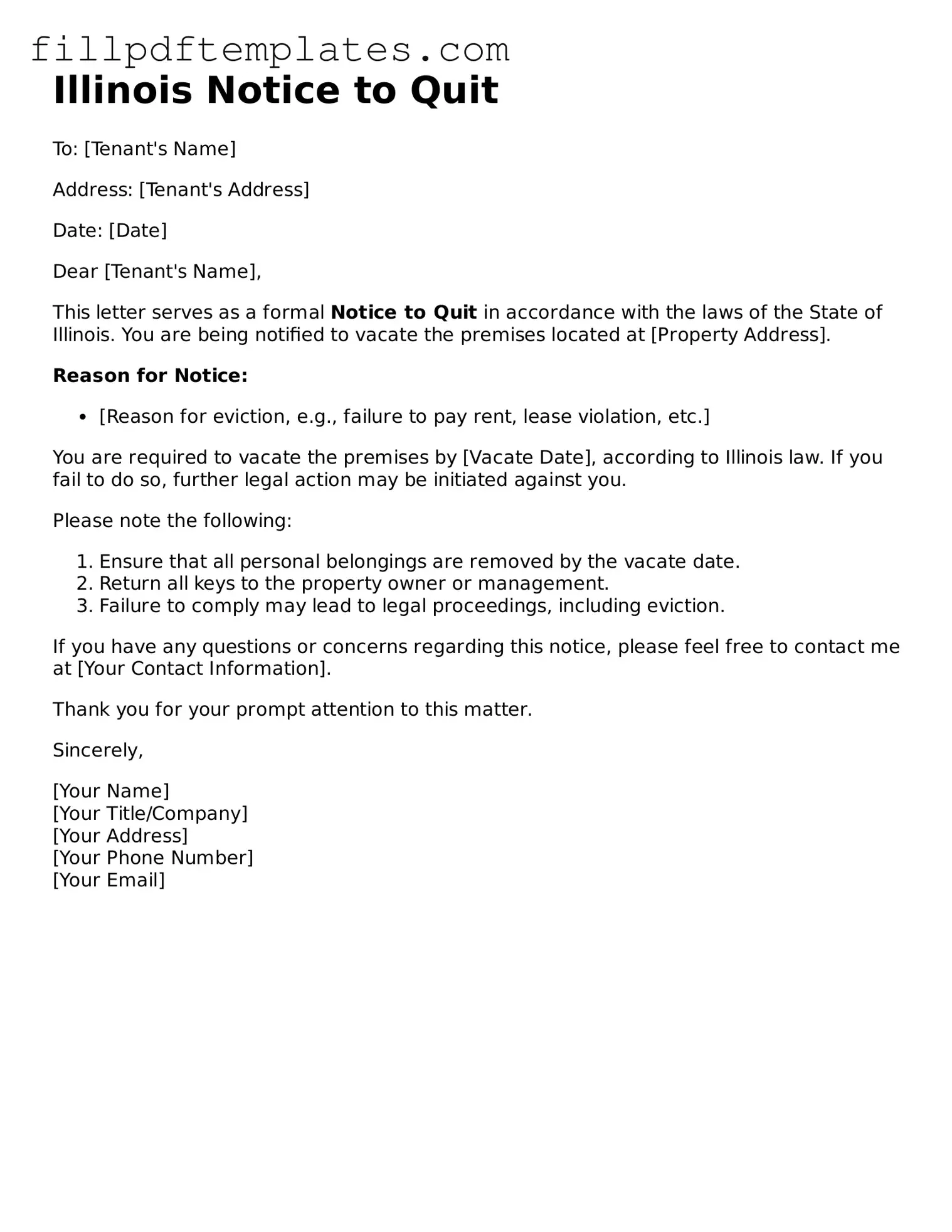Blank Illinois Notice to Quit Form
The Illinois Notice to Quit form is a legal document used by landlords to inform tenants that they must vacate the rental property. This notice typically outlines the reasons for eviction and the time frame in which the tenant must leave. Understanding this form is crucial for both landlords and tenants to ensure compliance with state laws.
Ready to take the next step? Fill out the form by clicking the button below.
Get Form
